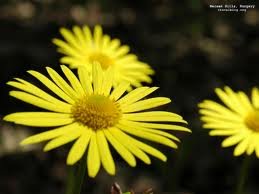Amy Markuske
Professor Antoniou
INTRO CMPT APP: FLUENT W/INFO TEC
7 September 2010
HTML: A fun programming language
HTML stand for HyperText Markup Language, which is used to create web pages. When developing a webpage you use HTML tags. These are used to format different parts of the webpage. The HTML tags can enhance paragraphs, heading, lists, tables, and images.
To use HTML you do not need any special software. Most people have everything they need, such as an text or HTML editor. It is easy and simple. Although, you can download an HTML editor which comes along with benefits. Adobe Dreamweaver is said to be the best editor to purchase. A trial version can be downloaded for starters. If you do not want to spend money on a pricey editor, you can download a free editor. These include SeaMonkey, Coffee Cup, or TextPad (for windows). A text editor is sufficient enough to use and most computer already come with one. Some text editors that can be used to format a webpage with HTML are Notepad (Windows), Simpletext/Text Edit/Text Wrangler (Mac) and Pico(for Linux).
Another simplicity of creating a webpage is that you do not to be connected to the internet. When you publish your page is when you will need to be online, which comes later.
The best ways of learning how to use HTML can be reading about it and experience. A combination of both is usually recommended. Also, learning through others web pages is a good source of learning. If you go to your favorite page, then look for the “Document Source” command under “View” in the menu, you will be shown a window with the HTML used to create this webpage. Looking it over and observing the final project of the webpage can easily teach you different HTML tags. It may seem like a complicated page at first glance, but when noticed is simply a few commands put together.
The required elements for an HTML document are certain tags. Basic tags work in pairs, therefore every tag must end in a matching tag to complete the style or command being placed in the webpage. The ending tag in the pair that match must have a “/” placed to close the tag. All tags must be inside of “<“ and “>”. They are not case-sensitive. A basic HTML document only needs these five tags: <HTML>, <HEAD>, <TITLE> Webpage </TITLE>, </HEAD>, <BODY>( Your body text here), </BODY>, and to close </HTML>. <HTML> indicates that this is a piece of HTML code. <HEAD> is the first distinct part of your document containing the <TITLE>.
<TITLE> states the title in the header for your webpage. It is also what will be shown by the browser when someone searches the keywords related to your site. <BODY> is the second and most important part of your HTML document containing all of the body text. This can come in six sizes. <H1> changes the size of this piece of body. There are many other tags, such as tags that will link your page to others, and ones that will decorate your page with images and sounds. Also, <P> allows for the start of a new paragraph. To put pictures on a webpage, they must be converted to one of many different digital formats. Software, such as Adobe Photoshop, can change the picture to the form you prefer to show it as. The pictures displayed on a page must be used with certain HTML tags to “point” to the picture files that have been uploaded to the server. The tags placed in a certain format manipulate the picture by a particular viewer. Pictures can be saved as a GIF or JPEG (most common) file. The most common tag used to place a picture on a webpage is <IMG SRC=”picture.gif”>.
http://www.webdeveloper.com/html/beginners_html.html















